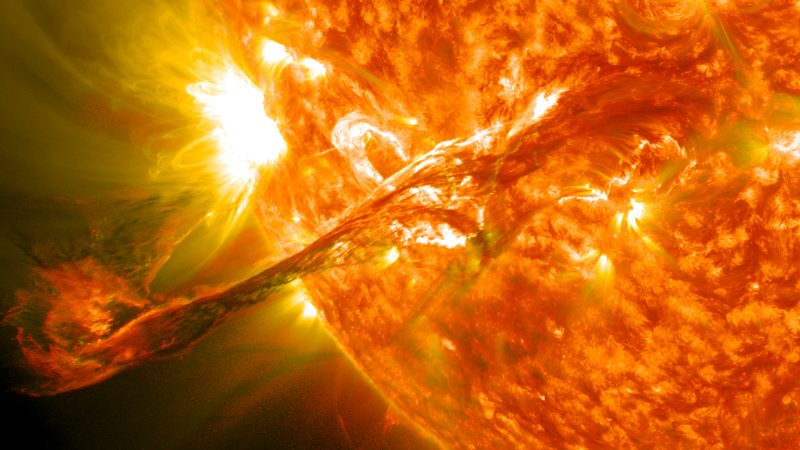In the 1960s the United States and Russia weren’t on the best of terms, what with the whole Cold War thing going on and all. So what if I told you that a solar storm almost plummeted the world into nuclear war? Weird, I know, but it happened and here is how.
A new study shows that on May 23rd, 1967 a solar storm had the United States Air Force scrambling to deploy planes carrying nuclear weapons. The storm knocked out all three of the United States’ early warning systems – designed to detect incoming Soviet missiles – at the same time. For a short time, military personnel believed the failure of the warning systems was due to the Russians jamming American radar transmissions; they took it as an act of war.
Lead researcher Delores Knipp stated, “The aircraft did not launch – we’re pretty certain about that, was war imminent? What we know is that decisions were being made on tens of minutes to hour’s basis, and that information got to the right place at the right time to prevent a disaster.”
Luckily, the United States’ brand-new Solar Forecasting Center was able to solve the problem right before World War III was set underway. “Had it not been for the fact that we had invested very early on in solar and geomagnetic storm observations and forecasting, the impact [of the storm] likely would have been much greater,” said Knipp. She said that the incident showed the importance of always being prepared.
Knipp and her team set out to study this event as, although 1967 storm is possibly one of the most significant solar storms of the last hundred years, it got very little academic attention. As part of the research, the team reached out to retired U.S. Air Force members, and that is when the story of a narrowly avoided nuclear war came to light.
Knipp stated that the storm turned out to be a good thing after all, as it brought about more formal Department of Defense support for current-day space weather forecasting. She said, “The May 1967 space weather events created a cascade of important decisions and studies that have contributed to the field of Space Weather as we know it, thus providing information to system engineers, and decision and policy-makers at many levels, even today.”
So yes, dear readers, the world almost ended in 1967; not by tanks or guns or even the top-secret espionage missions that have become so glamorized on TV, or in the film, but by a solar storm. The more we learn of the Cold War the stranger this period of the world’s history becomes.
